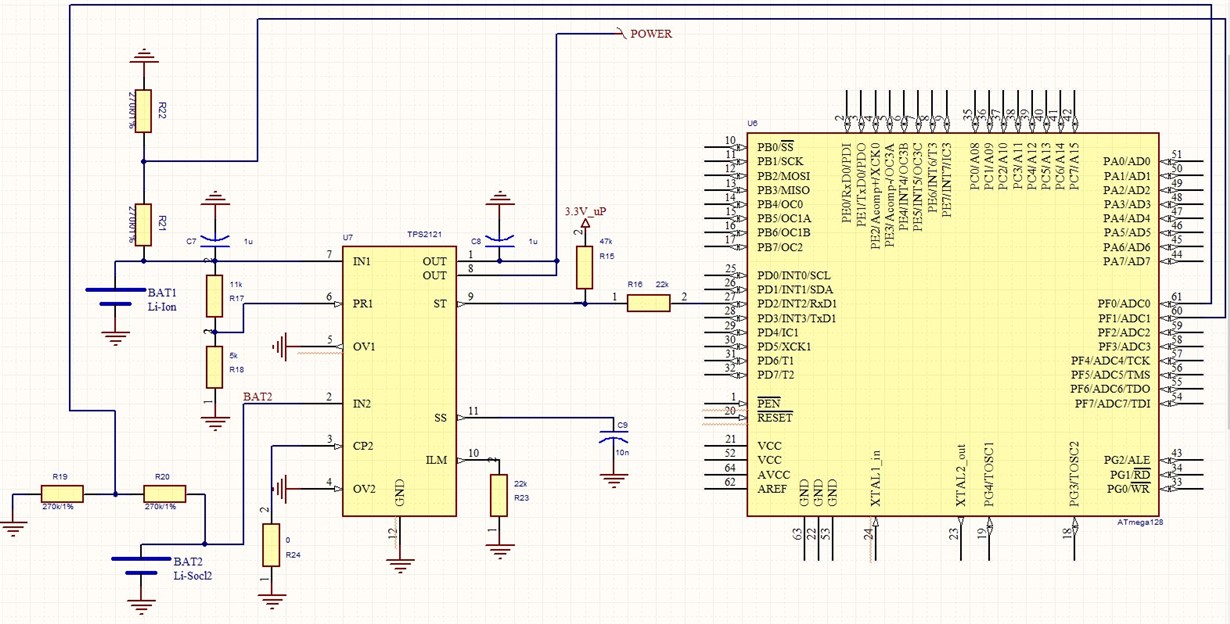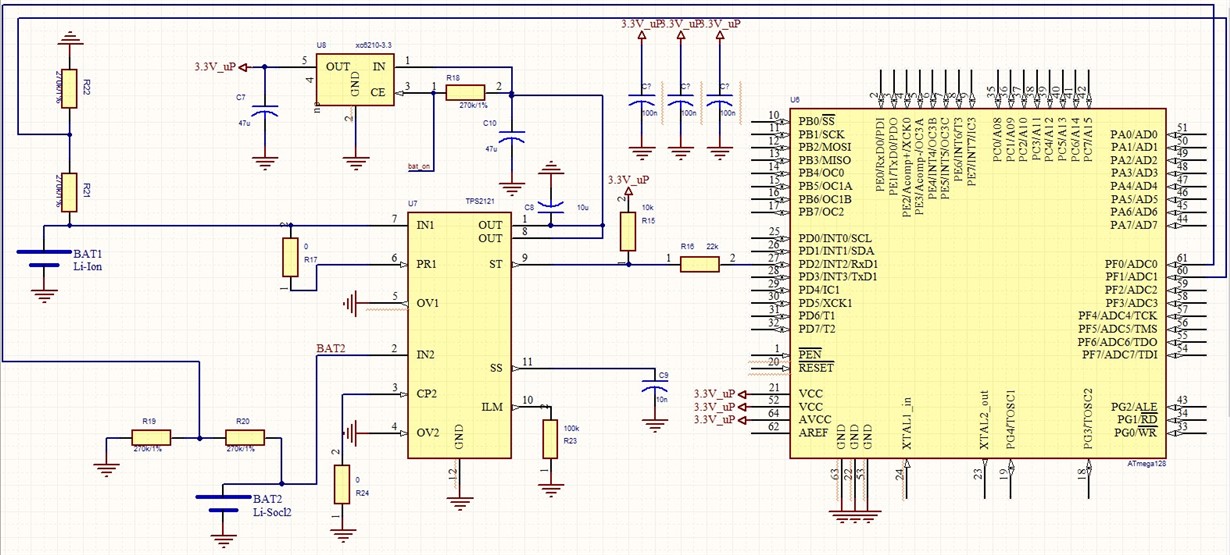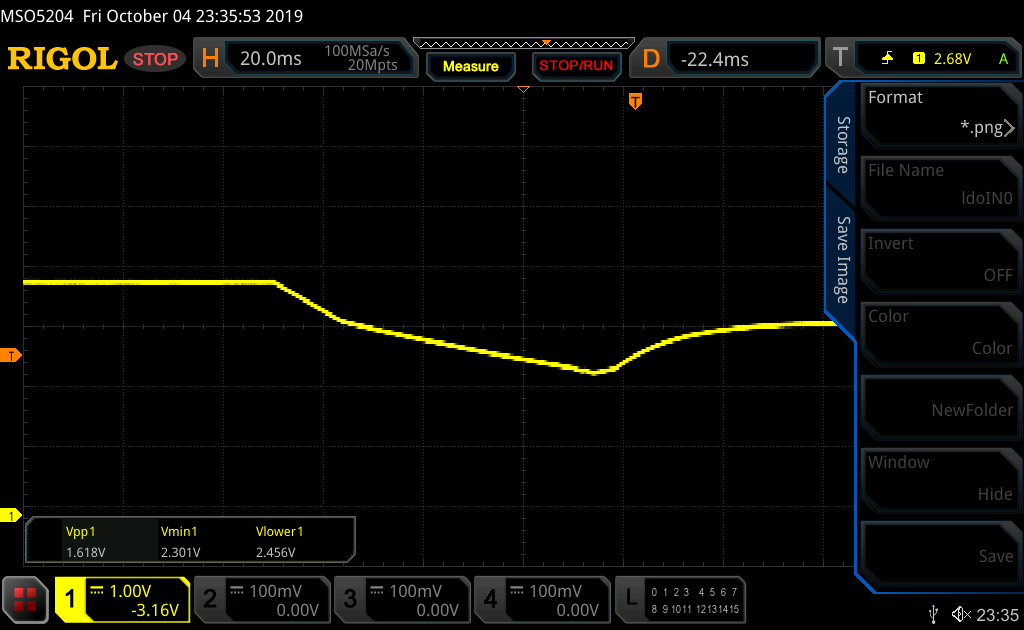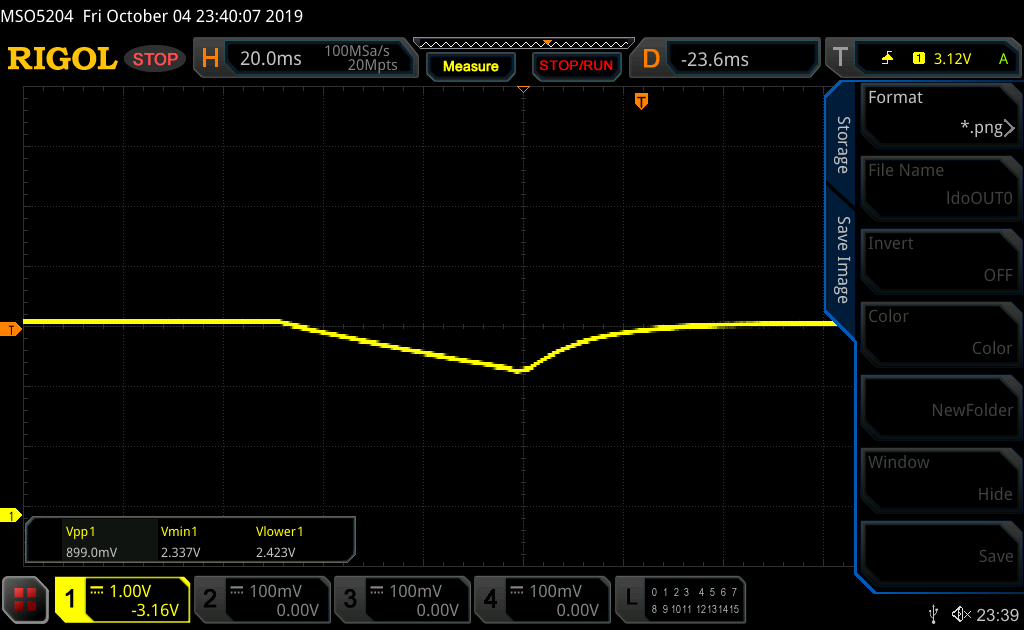Other Parts Discussed in Thread: LM66100, TPS2115A
Hello,
I’m trying to make hotswap battery scheme with TPS2121. Power consumption is around 20mA. My scheme is below. IN1 is general battery that will be used as main power supply (also will be charged). IN2 is backup battery that will be used only when the main battery is being replaced. That's why CP2 is grounded. BAT1 is Li-Ion 4.2V 4000mAh, BAT2 is Li-SOCl2 3.7V 1200mAh.
Power switching looks good and works perfect but there are two problems:
- When BAT2 voltage > BAT1 voltage there is charge current from BAT2 to BAT1. Also when BAT1 voltage > BAT2 voltage there is charge current from BAT1 to BAT2.
- From BAT2 I have constant discharge about 150-500uA. Is there a way for it to be reduced? Is Rilm affecting this current?
Thank you for your help!





